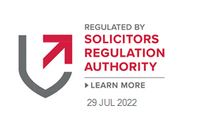Contact & Residence
Our friendly family law specialists are here to help. Contact us today to book an appointment.
The phrases that surround a parent seeing their child or an order that the child lives with a particular parent seem to have ever changing language. The majority of people on the street might call an order as to where a child lives ‘custody’. They often call an order that states how and when they see their child ‘access’ or, the American term, ‘visitation’.
From 1989 until 2014, the terms were different. What people refer to as ‘custody’ was actually called ‘residence’ and what was referred to as ‘access’ was called ‘contact’. This was in accordance with the Children Act 1989. However this changed again in 2014 so that now, you are likely to hear your lawyer talk about who the child ‘lives with’ and who they ‘spend time with’ as the old labels have been abolished. However, they can sometimes be used interchangeably with the old terms which still get circulated due to force of habit.
With the Children and Families Act 2014, the lingo changed but most of the basic principles did not.
The court is very pro mediation when it comes to making arrangements for children. You will be told at the time of issuing an application that you need to go to a MIAM (Mediation Information Meeting) – unless you fall into one of the exceptions. The court requires that mediation is at least attempted before they will hear a case and will often return cases to mediation if they feel it has not been properly attempted.
The second step is to issue a C100 application. If you have particular concerns about safety of a child you may also need to fill in a C2 application particularising the issues.
Once that has been issued with the court, it will also be provided to CAFCASS (Children and Family Court Advisory and Support Service). They will undertake something called a safeguarding check. This usually involves three actions:
Talking to each of the parents. If you have concerns about the other parent it is imperative that these are raised at this stage or it is less likely they will be taken seriously at a later stage;
Undertaking checks with the police as to each parent’s criminal history, if any. This will not involve more detailed checks of call outs. This can be done later. It will only include convictions, cautions etc;
Checks with Social Services to see if the family or the children are known to the local service.
This information will be compiled into a letter called a Schedule 2 letter and, with a summary of their findings, will also include recommendations for taking the matter forward. You will sometimes get this before the hearing and sometimes at the hearing. It varies from court to court.
The court will also list you for a FHDRA (First Hearing Dispute Resolution Appointment). This is a short hearing at which the court will be assisted by a CAFCASS officer and, in some courts, an in house mediator, in trying to bring the matter to a conclusion. The case can be heard by a Judge or by magistrates.
If agreement cannot be reached or the court has serious concerns about the safety of a child they may make directions (which is, in essence, a list of jobs) to help them consider the issue in more depth. These directions include, but are not limited to:
A section 7 report – this is s7 of the Children Act 1989 and is a more in depth investigation of the situation by a CAFCASS officer. This may include talking to the child (if they are old enough), talking to the child’s school and further conversations with the parents. It is rare for one of these to be ordered unless there are safeguarding concerns;
Statements – documents which allow the parents to set out, more fully, their case so they can consider the opposing sides;
Full police or social services disclosure;
A fact finding hearing – which is a mini trial used to determine who is telling the truth about certain allegations, and usually reserved for serious domestic violence cases.
The court will then set the hearing down for a Dispute Resolution appointment. This is another short hearing but is used to try to ‘crack’ the issues with a Judge or magistrates guiding the parties. If agreement cannot be reached at this stage, the case will be listed for final hearing.
A final hearing is a trial at which both parties will give evidence and the court will make final decisions about the child’s welfare. Do not be surprised if your lawyer tries hard to steer you away from this. They are incredibly unpleasant and invariably does more harm than good. I tend to remind my client that I’m going to come in and point the finger at their ex for half a day but then they have to go and deal with the consequences of that for the next 18 years. It isn’t nice and generally there is a compromise to be had.
The court also does not like to micromanage parents. The aim of the game is to get you working together not to make decisions for you. So if, for instance, you cannot agree whether or not little Timmy should watch a 12A when he is only 10, that is not something that the court will want to adjudicate on.
We are accredited and approved.
Bellwether Solicitors is authorised and regulated by the Solicitors Regulation Authority under SRA number 627330.
We are subject to the rules set out in the SRA Standards & Regulations, which can be accessed here.
We are proud members of Resolution.
Emma Kirkaldie is listed as a Leading Lawyer by Wiselaw.



